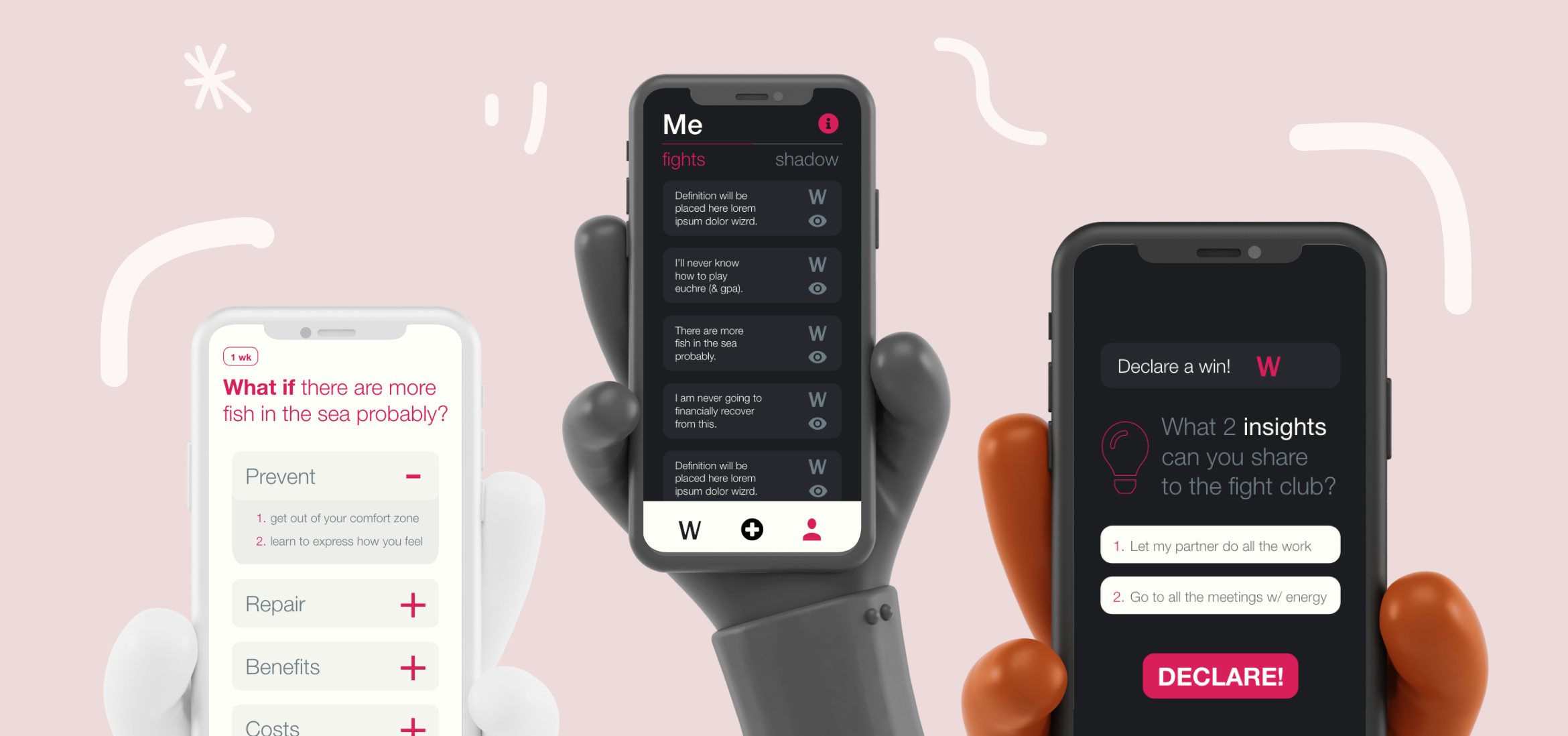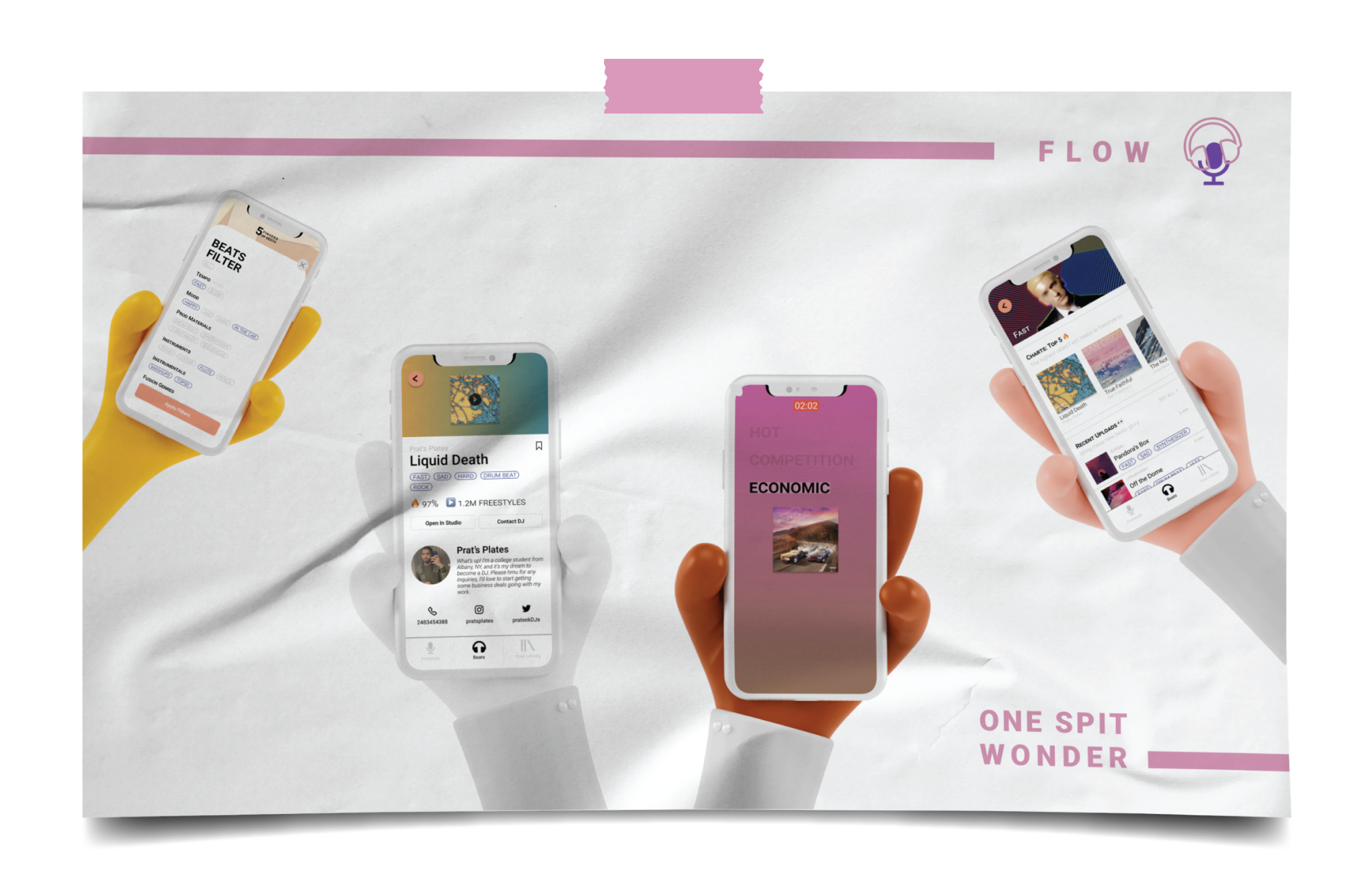Shadowboxing
Face fears to fight tasks.
Personal Project | 2020 | 4 months

What is Shadowboxing?
Shadowboxing is a fear-setting platform for college students; simply, a platform for facing fears through acknowledgement and retrospection. This app facilitates acknowledging fears by giving prompts that require stoic introspection. As a person faces their fear, Shadowboxing welcomes retrospection, so that a person can share the lessons they learned to the greater college community. Altogether, the platform helps students overcome their fears within a greater community that offers inspiration in balancing their college journeys.
Project Overview
Starting in March 2020, I touched UI Design software for the first time, painting this TED-talk-inspired idea for a long weekend. Fast forwarding past the COVID-ridden summer, I grew passionate for user research come fall; holding Shadowboxing tight with me, I found two valuable class experiences to better research the problem and, in turn, further iterate the solution. Altogether, this project means the world to me, because it showed me how UX research methods can navigate to actionable insights.
Role
Concept Dev.
Visual Design
User Testing
Tools
Adobe XD
Usertesting.com
Zoom
UX Methods
Usability Testing
Focus Group Concept Testing
Problem
Challenge
College students have to find and juggle many new realities of life in their college experience. Every day, students envision their tasks and set loose goals for themselves, essentially making a race out of their life, which ultimately creates the false perception that they can fall behind. Today, the perception of falling behind is a danger to the mental health of students.
To adapt and grow during these times, college students' perception of productivity and day-to-day growth must change. Shadowboxing helps students practice fear-setting, which is a prime opportunity to turn their perception on its nose.
Problem Statement
🔍
College students want a more realistic method to structure their personal progress, so that they can better envision how each endeavor affects their future.
The Case






























Key Takeaways
Life is a Design Library
In the wise words of Tinker Hatfield, "just get out there and experience life. That just gives you a library in your head to then translate that into unique, new design work." Shadowboxing is a reflection of my passions, from binge-watching TED talks to reading my favorite book, and even growing tired of productivity apps after interning for one. While I am proud of this reflection, I am also reminded that it is not the ultimate goal to be self-expressive, but instead to solve a problem for someone else. There's no Batman without a Joker, and there's no product without a problem. In the future, I want to start with empathy, because the problem space always molds the best solution.
Passion is the Heartbeat for an Idea
This experience gave me a new perspective on the term "Passion Project". Throughout 2020, my passion for Shadowboxing didn't die; as a result, the idea itself would live to see another day. Fast forwarding past a busy, pandemic-ridden summer, this passion stuck with me and the idea inevitably revived in any way I could find; come Fall, this came in the shape of two separate school opportunities. Altogether, I am most proud of how I kept this idea alive with my access to time and resources.
What would I do differently?
Next time, I would test designs of low fidelity first, because low fidelity creates a space for more genuine feedback and rapid iteration. After all, participants are more comfortable critiquing quick sketches or wireframes; moreover, designers are more happy to change simple designs, as they don't have to worry about strenuous decisions like color and typography. Altogether, this saves energy for rapid design iteration; whereas, in my project, I have yet to implement the actionable feedback that I have collected, as I experience burnout in anticipation that there will be more findings to come.
Thank You!
Want s'more? Check out more projects below!




